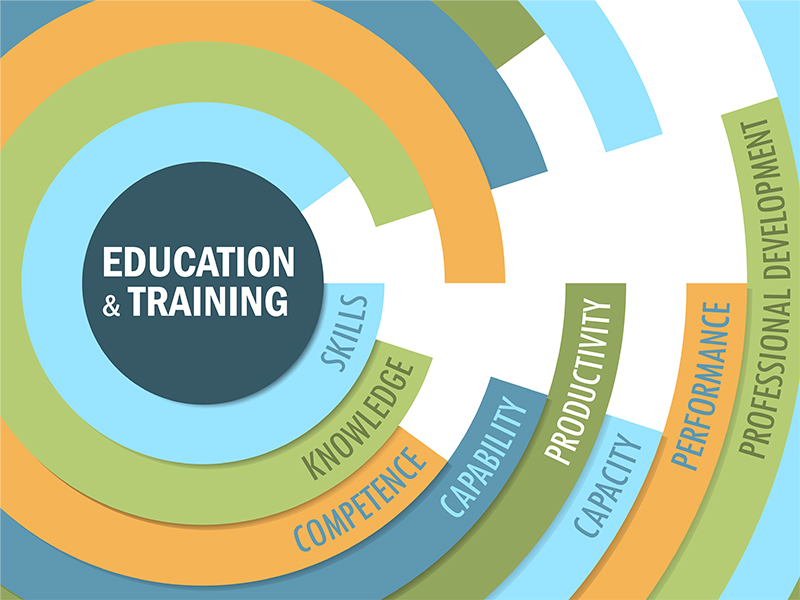
The role of education and training in developing a skilled and adaptable workforce cannot be ignored. As building technologies advance at a blistering pace, educational institutions face the challenge of providing their employees with the technical knowledge and soft skills necessary to succeed. Strategic investment in education and training is not only a financial decision; it is a commitment to the long-term health of the individual employee and the organization.
The rapid evolution of technology is a key driver behind the need for strategic investment in education and training. We are dealing with the increased use of automation, artificial intelligence, and data analytics becoming the norm in the facilities management industry. Keeping pace with these advances requires employees to continually update their skills. For leaders, taking a strategic approach to education and training means recognizing the importance of preparing the workforce for the future, thereby ensuring they have the skills necessary to succeed.
Human capital is an organization’s most valuable asset. Employees are not merely resources; they are the heart and soul of the organizational culture. Staff equipped with the right skills and knowledge are more productive, more engaged, and more efficient. When employees are empowered with education and training opportunities, the entire organization benefits.
Employees are not merely resources; they are the heart and soul of the organizational culture.
Strategic investment in education and training is more than the occasional vendor-hosted lunch-and-learn or institutionally required annual safe workplace training. It involves the development of a comprehensive and well-structured program that aligns with the organization’s vision and strategic goals. This may include targeted courses, mentorship/apprenticeship programs, and on-the-job knowledge transfer initiatives. By customizing educational strategies to fit your organization’s specific needs, you can ensure a positive return on investment.
In 2023, Jim Jackson and his team at the University of Nebraska-Lincoln partnered with APPA and Michelle Frederick from American University to develop. This two-day training program helps frontline facilities staff to be efficient and productive individuals and contributors to the team and institution by focusing on human skills, with an emphasis on skill development in the areas of emotional intelligence, effective communication, conflict management, understanding individual bias, and building and maintaining effective relationships with colleagues. Invest in Success is offered on campus, keeping costs low, and intentionally targets people who might not otherwise have access to this kind of in-depth professional development. The University of Wisconsin-Madison has offered the program several times, and a member of its training team has become certified to teach the course. Feedback from participants has been overwhelmingly positive, with 100% saying it was worth their time and they would recommend the course to others.
The University of Chicago uses Academic Impressions, a web-based service that provides professional and leadership development courses for higher education employees. The service offers thousands of different courses, making navigating it overwhelming for some, so the university’s human resources staff plans to work with each unit in facilities services to define training tracks that address current needs and align with the organization’s strategic initiatives. To encourage engagement in this and other training opportunities, the university also recently held an employee engagement fair. Each program had a table, and staff members that had participated in the programs acted as ambassadors, providing their colleagues with information and encouragement. The peer-to-peer interaction worked well, as employees felt comfortable chatting about the programs with their co-workers. Highly attended by employees at all levels, the fair was considered a great success.
By and large, providing education and training positively impacts employee morale and increases job satisfaction. Employees who feel supported in their professional development often have a higher sense of loyalty and are more engaged in assisting the organization in reaching goals. Staff who feel their employer cares about their growth are more likely to be motivated, dedicated, and committed to the organization’s mission. Continuous investment in education and training increases talent retention and recruitment, lowering the risk of turnover. Instead of asking, “What happens if we train our people and they leave?” employers should ask, “What happens if we don’t train them and they stay?”
Successful education and training programs require effective planning and execution. Organizations must assess the skills of current staff with a forward focus and understanding of future needs, then identify gaps and align training programs with the strategic initiatives of the organization. Further, training initiatives’ long-term success depends on continuous evaluation and adaptation. Poll staff at least annually—preferably twice-annually. Staff feedback and continuous monitoring of industry trends should inform your training plan.
Strategic investment in education and training is not an option. It is an absolute necessity for the future of your workforce, organization, and broader institution. By prioritizing education and training, you also empower your staff and contribute to the overall health and well-being of individuals and the institution. As facilities management professionals continue to navigate the complexities of the current higher education landscape, organizations that prioritize continuous learning and skill development will undoubtedly emerge as leaders.
Lindsay Wagner, PhD, is the owner of The Knowledge Collaborative, in Lake Havasu City, AZ. She can be reached at [email protected]. If you would like to contribute to this column, please contact Lindsay directly.
Facility Asset Management
Covers the issues and challenges surrounding the management of a facilities department, including solutions for benchmarking performance measures, database and reporting systems, and professional and educational trends in facilities management. To contribute, contact Lindsay Wagner, field editor of this column.
See all Facility Asset Management.


